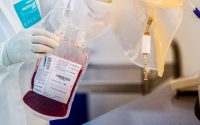Research illustrates the role of Gasdermin D protein in immunity tolerance to food
Reviewers’ Notes
A research team led by Prof. ZHU Shu from the University of Science and Technology of China (USTC) of the Chinese Academy of Sciences (CAS) illustrated the role of Gasdermin D (GSDMD) protein in immunity tolerance to food in the small intestine. The study was published in Cell.
GSDMD, an executioner protein of cell pyroptosis, has garnered widespread attention. When cells are stimulated by pathogen-associated molecular patterns (PAMPs) or damage-associated molecular patterns (DAMPs), the signaling receptors within the cells activate caspase-1/4/5/8/11, leading to the N-terminal cleavage of GSDMD and the generation of the p30 fragment, which triggers cell pyroptosis and the release of inflammatory factors through the inflammasome formation.
These functions were mainly discovered in exploring myeloid cells, while GSDMD is widely expressed in various tissues and organs under physiological conditions, including the small intestine where it is highly expressed as a member of the gasdermin family. The non-pyroptotic functions of GSDMD and its specific physiological role in the intestine need further exploration.
In this study, the researchers conducted protein blotting analysis of GSDMD in cells from different tissues under physiological conditions. They found that only the intestinal epithelial cells (IECs) in the small intestine showed a distinct approximately 13-kD fragment. Further exploration revealed that this fragment originated from the N-terminal of GSDMD and was cleaved by caspase-3/7 at D88 of GSDMD. The researchers showed that the 13-kD N-terminal fragment translocates to the nucleus and induces the transcription of MHCII molecules in the IECs of the upper small intestine.
Using techniques like single-cell RNA sequencing, the researchers found that the depletion of the fragment resulted in decreased expression of MHCII molecules in IECs, leading to a reduction in Type 1 regulatory cells (Tr1 cells). Since Tr1 cells are considered crucial for inducing food tolerance, it was speculated that the 13-kD N-terminal fragment of GSDMD ultimately participates in the induction of food tolerance.
To test this hypothesis, the researchers developed two food tolerance models, in mice and confirmed that GSDMD plays a physiological role in the intestine by contributing to the establishment of host food tolerance.
This study illuminated how the N-terminal fragment of GSDMD is formed in the upper small intestine under food-induced conditions. The fragment enters the nucleus with the assistance of the nuclear pore complex and enhances the transcriptional regulation of STAT1 on CIITA, resulting in increased expression of MHCII molecules in IECs. This, in turn, triggers an increase of Tr1 cells and ultimately induces food tolerance, offering new insights for the treatment of food allergies.
University of Science and Technology of China
He, K., et al. (2023) Gasdermin D licenses MHCII induction to maintain food tolerance in small intestine. Cell. doi.org/ 10.1016/j.cell.2023.05.027.
Posted in: Cell Biology | Medical Science News | Medical Research News
Tags: Cell, Food, immunity, Inflammasome, Pathogen, Protein, Research, RNA, RNA Sequencing, Small Intestine, Technology, Transcription


